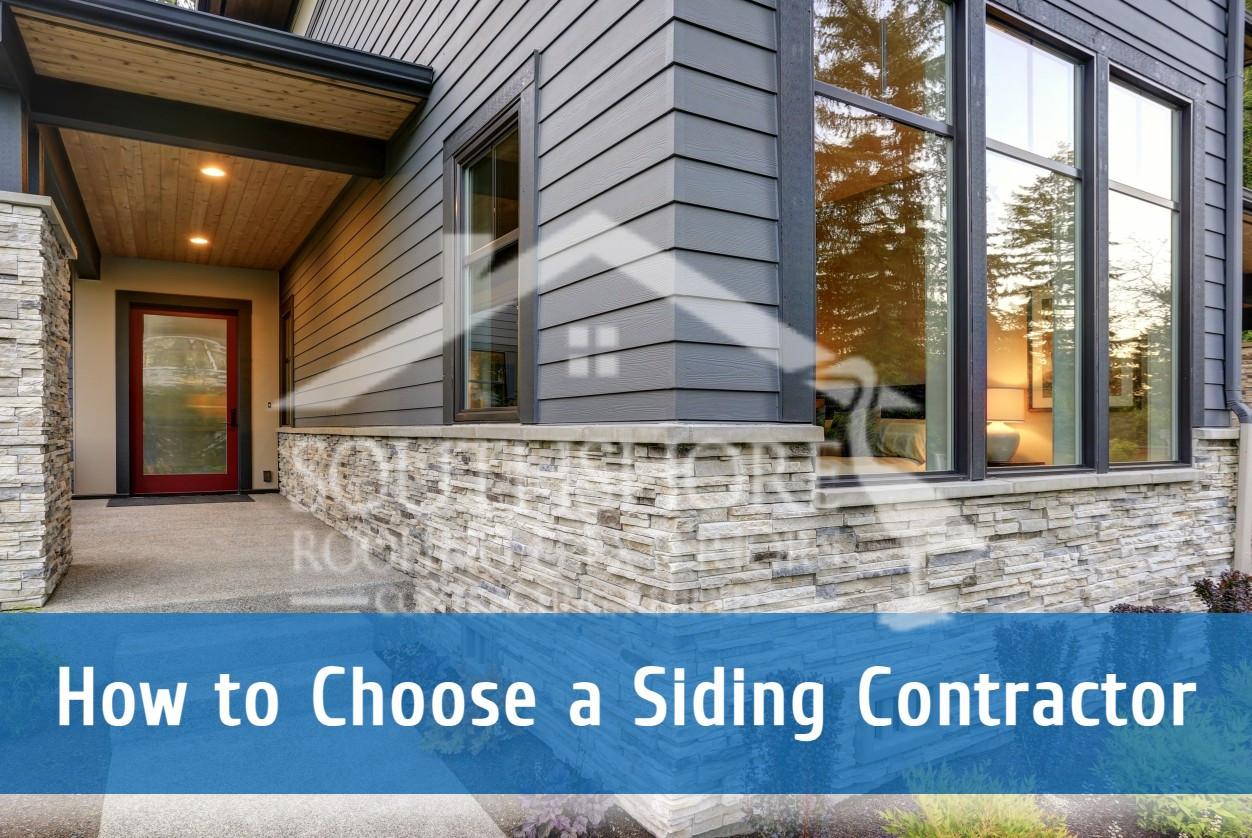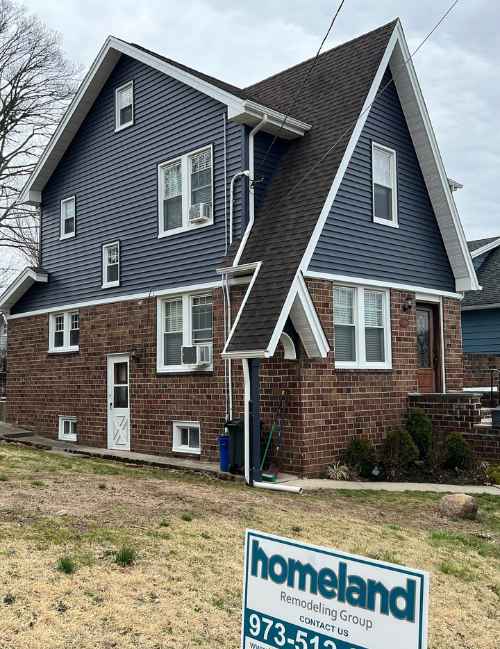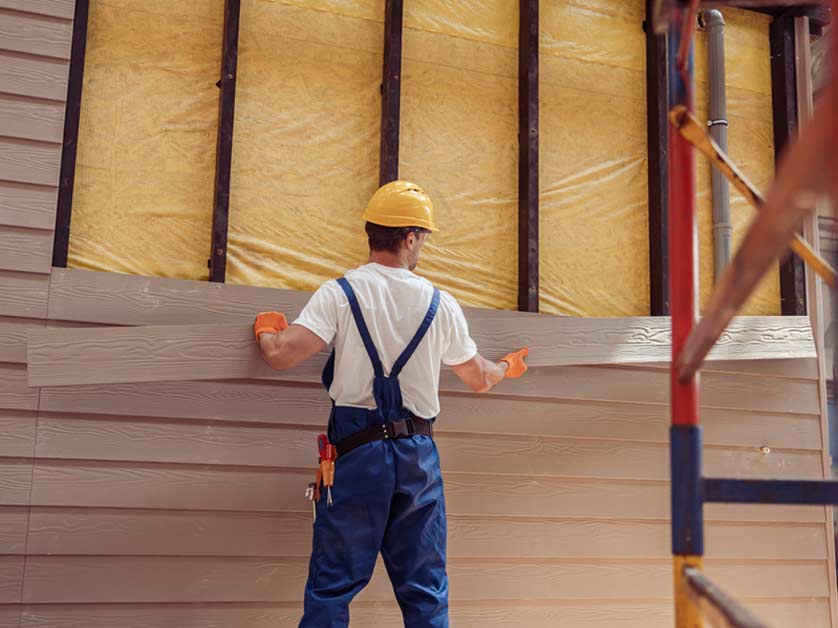The Important Overview to the Different Kinds Of Home Siding and Their Unique Advantages
In the realm of home enhancement, picking the best siding is a vital decision that affects both visual allure and practical performance. The range of products available, such as wood, plastic, fiber steel, block, and cement, each deal unique benefits that provide to various demands and choices. Recognizing these differences can substantially improve the long life and worth of a property - morris siding contractor. Nevertheless, with a lot of alternatives to consider, which exterior siding product genuinely attracts attention for your specific project? Discovering these selections can bring about notified choices that align with both style and practicality.
Timber House Siding
Timber house siding, a popular choice for residential outsides, uses an ageless aesthetic that integrates all-natural charm with structural honesty. This home siding material is readily available in different designs, consisting of clapboard, roof shingles, and board-and-batten, allowing homeowners to tailor their appearance to match their style preferences. Timber home siding is normally crafted from resilient species such as cedar, redwood, or yearn, which are known for their strength and capability to withstand ecological stressors.
Among the main advantages of wood siding is its exceptional insulation buildings, which can contribute to power performance and lower heating expenses. Additionally, wood house siding is eco-friendly, making it an environmentally friendly choice when sourced sustainably. Normal maintenance, consisting of paint or staining, can extend its lifespan and improve its look, allowing house owners to protect the natural appeal of the timber.
However, prospective downsides consist of sensitivity to insects, rot, and climate damages, necessitating appropriate therapy and upkeep - morris siding contractor. In spite of these problems, when effectively cared for, timber house siding can give a lovely and sturdy remedy that boosts the personality of a home while offering a warm, welcoming ambience

Vinyl Siding
Plastic exterior siding has become a leading selection for property owners looking for a low-maintenance exterior alternative that integrates resilience and price. This flexible product is crafted from polyvinyl chloride (PVC), making it resistant to numerous climate conditions, consisting of dampness and UV rays. Consequently, plastic exterior siding does not warp, rot, or discolor, making sure long-lasting aesthetic allure.
One of the main advantages of vinyl house siding is its substantial range of designs and colors, enabling homeowners to attain the desired search for their home without the demand for frequent repainting. Furthermore, plastic siding is simple to mount, which can significantly minimize labor prices throughout construction or improvement projects.
Plastic house siding also adds to energy effectiveness. Lots of alternatives feature insulation backing, which improves thermal efficiency, assisting to keep comfy interior temperatures and potentially lowering energy bills. In addition, its smooth surface assists in simple cleaning, requiring only routine washing with a garden hose to remove dirt and particles.
Fiber Concrete Exterior Siding
Fiber cement siding has actually gained grip among home builders and homeowners alike as a result of its impressive mix of longevity and visual adaptability. Composed of a mixture of cement, sand, and cellulose fibers, this home siding choice is engineered to hold up against extreme weather condition conditions, including high winds, hefty rain, and temperature level variations, making it a long-lasting selection for property exteriors.

Among the primary advantages of fiber cement siding is its resistance to bugs, such as termites, and its non-combustible nature, offering enhanced fire security. morris siding contractor. Additionally, it resource is offered in a vast range of styles, structures, and shades, allowing house owners to achieve their desired visual without giving up performance
One more advantage is its reduced upkeep requirements; fiber cement home siding usually calls for paint or discoloration every 5-10 years, which is less regular than various other products. Its long life adds to a reduced total cost of ownership, as it decreases the need for constant check fixings or replacements.
Ultimately, fiber cement home siding stands for a superb investment for those seeking a durable, appealing, and flexible exterior choice, integrating both kind and feature to boost the home's visual charm.
Metal Home Siding
The appeal of metal house siding exists in its durable durability and modern visual allure, making it a popular option for modern style. Readily available in products such as aluminum and steel, metal siding supplies an array of colors and finishes, permitting home owners to accomplish an individualized look that enhances their layout vision.

Power effectiveness is one more substantial benefit, as several steel house siding items are made with insulation choices that aid manage interior temperature levels. This can cause minimized energy expenses with time. Furthermore, metal exterior siding is commonly recyclable, making it an ecologically friendly choice for sustainability-minded property owners.
The installation process for metal siding can be reasonably uncomplicated, leading to a quicker turnaround time for construction tasks. On the whole, steel home siding integrates performance and style, making it a practical alternative for those looking for a enduring and aesthetically enticing outside surface.
Brick and Rock House Siding
Brick and stone house siding stands apart as a classic choice that boosts the aesthetic charm of any kind of home. Understood for their sturdiness and low maintenance, these materials give an extraordinary return on investment while elevating address the residential or commercial property's aesthetic charm. Readily available in different shades, structures, and patterns, block and stone can be customized to fit varied architectural designs, from traditional to contemporary.
Among the primary advantages of block and rock siding is their energy performance. Both products possess all-natural insulating properties that assist control interior temperatures, potentially decreasing cooling and heating costs. Furthermore, they use premium fire resistance compared to other exterior siding choices, adding to boosted safety.
One more advantage is their durability. Block and rock can last for years, usually requiring very little maintenance past periodic cleansing. Unlike timber home siding, they are resistant to parasites and rot, ensuring a long-lasting exterior that endures the elements.
Conclusion
In summary, the selection of exterior siding considerably affects a home's aesthetic charm, energy effectiveness, and maintenance requirements. Each type of siding-- whether timber, plastic, fiber concrete, brick, or metal and stone-- supplies one-of-a-kind benefits tailored to numerous property owner preferences and environmental problems. Recognizing these options allows educated decisions that improve both the sturdiness and aesthetic charm of household exteriors. Eventually, choosing the appropriate exterior siding is necessary for accomplishing an equilibrium in between capability and design in household architecture.
One of the main advantages of wood home siding is its excellent insulation properties, which can contribute to energy efficiency and lower heating prices. Furthermore, timber siding is naturally degradable, making it an eco friendly option when sourced sustainably.One of the primary benefits of steel siding is its resistance to numerous environmental variables.Power performance is one more substantial advantage, as several metal house siding items are created with insulation alternatives that help regulate interior temperature levels. Each kind of home siding-- whether timber, vinyl, fiber metal, brick, or cement and rock-- offers one-of-a-kind advantages tailored to numerous homeowner choices and ecological problems.